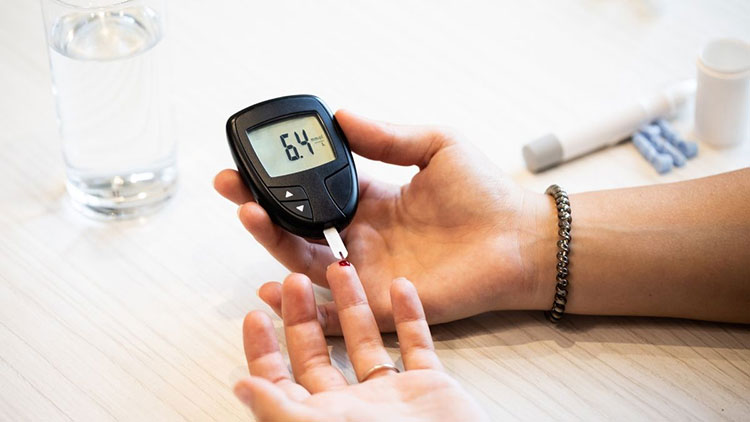Secondary aging is aging primarily caused by environmental factors, lifestyle habits, and disease. In the 1800s, it was much less common to see people live to the age of 40. Today’s life span is about 80 years old in many different countries. You may not feel like you have control over your aging, but scientists and health practitioners have found otherwise.
While aging is inevitable, there are ways to mitigate the effects of secondary aging. Secondary that would not have occurred, had you not lived across the street from a gas station, which leaks harmful chemicals into the environment nearby. It’s aging that would not have occurred had you made a different choice at mealtimes and had a full night of rest. These are factors within our control, but disease can also result in secondary aging.
We can’t always do something about diseases, but this article will inform you on a few ways you can use dietary improvements to reduce the effects of secondary aging.
4 Anti-Aging Interventions
Making small changes in these areas will affect your genes on an epigenetic level – and you’ll see a difference within a few months, especially if you take pictures of yourself before starting and along the way. Also, keeping a journal of your symptoms will allow you to see which ones are resolved, simply from environmental factors and habit changes.
But what specifically can you do to reverse secondary aging?
1. Caloric Restriction
Cutting your calories about 40-50% has been found to significantly slow down aging. If you are eating a 2000 calorie diet daily, this translates to eating a 1000 to 1200 calorie diet instead.
Caloric restriction extends both health and life span according to many studies. And since it’s something that is under your control, you could count it as a secondary aging buster.
Eating less food two days a week is the easiest way to restrict calories.
Another way to do this is to restrict the hours that you eat. Instead of eating any time during the 16 hours you are awake during the day, you can eat during only 6 to 12 hours. This will not only cut your caloric intake but will give your body the chance to detoxify itself.
Restricting the times during the day when you eat is called intermittent fasting.
2. Cutting Out Sugar Completely
Many people don’t want to even conceive of the idea of removing sugar from their sugar bowl, cabinets, and foods they eat but it’s one of the best ways to stop secondary aging.
You might consider cutting sugar consumption in half for the first two weeks, and then decreasing it another half in the next week. Reducing sugar consumption slowly can prevent depression from occurring due to the interaction sugar has on serotonin levels in the body.
Sugar does something called glycation to the cells of the body. It combines with red blood cells and other functional cells of your organs. Once it combines with the cells, it renders those cells useless.
When you continue eating sugar, greater numbers of your organs’ cells become dysfunctional until you hit a certain level where the organ shuts down. This is the reason why diabetics get kidney disease, go blind, and have neuropathy in their legs – it’s due to the high levels of sugar in the blood, which were supplied by the diet.
If you’re serious about living life to a good old age – and that means you are healthy up until the day you die – then truly consider giving up sugar.
3. Add Positive Nutrients Into Your Diet
As many people get older, they become pretty diligent about taking their medications but neglect the life-saving vitamins and minerals they need for good health. Older adults have different nutritional needs, and it’s important to adjust over time with our bodies.
Part of the problem is that medications deplete the body of vitamins and minerals; whole books and hundreds of journal articles have already confirmed this. Thus, if you only take medications without nutritional supplements, then you will in time come up with vitamin and mineral deficiencies. There’s no way around it.
Several nutrients have been linked with extending life span and can be considered helpful to combat secondary aging:
- vitamin E
- vitamin C
- omega 3
- zinc
- selenium
- vitamin A
- vitamin D
Going to a clinical nutritionist who can determine what exactly you need based on blood and hair tests is the best way to get your nutrition back on track.
4. Add Superfoods, Herbs, and Other Nutrients
One nutrient that has had a lot of press over the years for its anti-aging effects is resveratrol. This is a medicinal substance found in the herb/weed bindweed that actually adds length onto the telomeres, thus extending life.
You may have heard about resveratrol because marketing agencies promote it as an ingredient found in red wine and muscadine grapes, but the amounts in grapes is so small that bindweed is always used as the source plant material. Regardless of the source, resveratrol can be counted on as an agent capable of reversing secondary aging.
There are a lot of things you can do to reverse the clock of both primary and secondary aging. Now that you know some of them, which ones can you begin doing to turn back the ravages of aging?
Other Helpful Steps
As you can see, diet plays a role in secondary aging. Making some adjustments will help reduce the effects. There are a few other steps you can also take.
Get Your Blood Sugar Levels Normalized
When your insulin levels are higher than normal, it reduces your life span. Insulin activates a complex web of pathways in the body, ones that are involved in mechanisms regulating longevity – and secondary aging.
Insulin resistance means that the insulin levels are so high in your bloodstream that insulin can’t enter into the muscles where it’s supposed to be. In the blood, high levels of insulin play havoc with your entire body.
Insulin levels are raised when you eat foods that have a high glycemic index: foods that contain GMO wheat, sugar, corn, fried foods, sugary desserts, and other grains. Cutting the carbohydrates in your diet is one of the surest ways to lower the number of high glycemic index foods you eat.
Cutting these foods out of your diet will also help you reduce the effects of secondary aging, and you’ll see a noticeable reversal of some things within a few months, such as an easy 10 pound weight loss.
Get Your Mitochondria Working Better
There’s a progressive decline in muscle mitochondria DNA with age. Investigators have found there’s an age-related decline in muscle mitochondrial function related to peak oxygen uptake. The two are related.
Aerobic exercise can help prevent this, so every senior should consider staying active, using some exercise equipment, etc. But increasing activity may be nearly impossible if you are disabled in any way. What really needs to be looked at is the medications you are taking.
Medications are notorious for interfering with mitochondrial function, yet this isn’t something your doctor will warn you about.
The key is to get healthy enough to not need medications instead of needing greater and greater amounts of medications as you get older. And now it’s entirely possible to go on a high blood pressure reversal program or a blood sugar lowering protocol from alternative healthcare practitioners who have worked with thousands of patients to accomplish these tasks.
In fact, many doctors have stepped out to talk about how the number of medications someone is on is directly affecting their quality of life. The greater the number of medications, the lower the quality of life. And the lower the quality of life, the more rapidly secondary aging sets in.
Once your blood pressure is reduced or your blood sugar is within normal range, there’s no more reason for you to be on those medications.
Another way to ensure your mitochondria are working is to stop wearing facial masks. They have clearly been shown to decrease the body’s oxygen levels. For example, in one study, wearing a face mask for 28 seconds was all it took for infants to stop breathing. Their oxygen saturation fell to 49%.
Wearing a facial mask mixes expired air with inspired air and elevates the carbon dioxide level inhaled. This results in less oxygen in the bloodstream and 7.4% greater CO2 levels, according to researchers from Stanford. The less oxygen you have in the bloodstream could affect your longevity. Your body depends on it for all its functions! Lack of oxygen will not only accelerate secondary aging; it could kill you!
Consider decreasing the amount of time you wear facial masks each day. For example, do you really have to wear the mask while you’re driving your own car? Do you have to wear it in the parking lot of the grocery stores you frequent? Start thinking outside of the box – your health depends on it. This is especially important for those who have respiratory disease.







